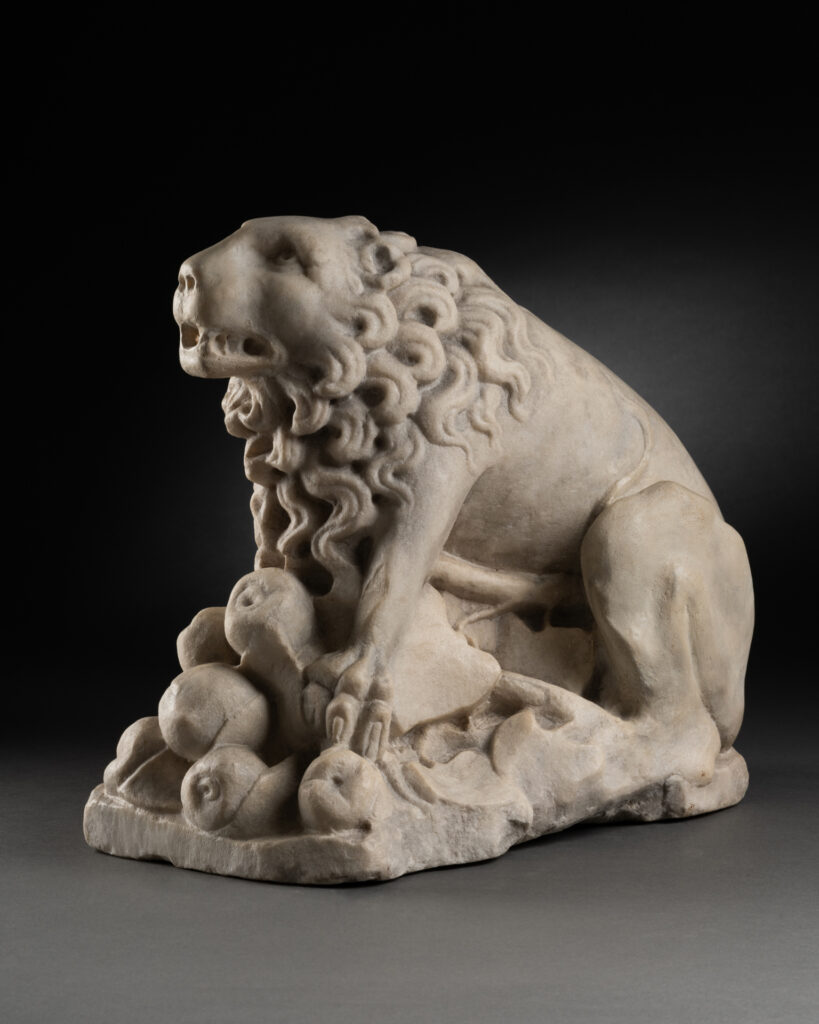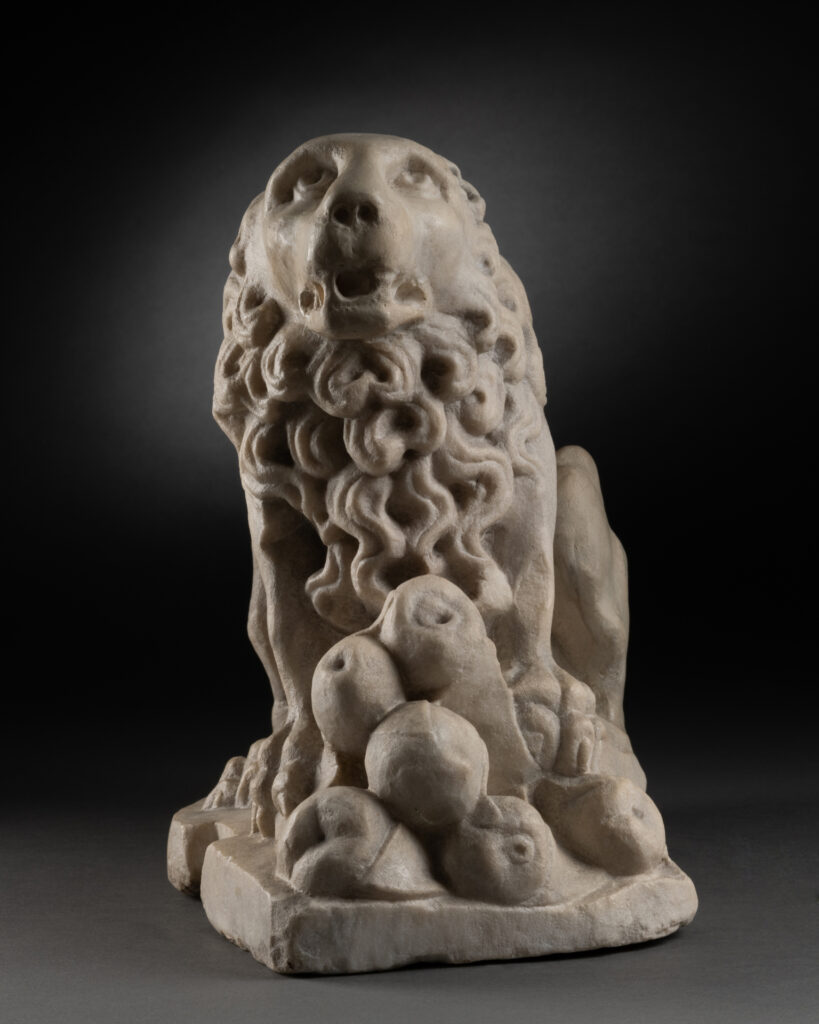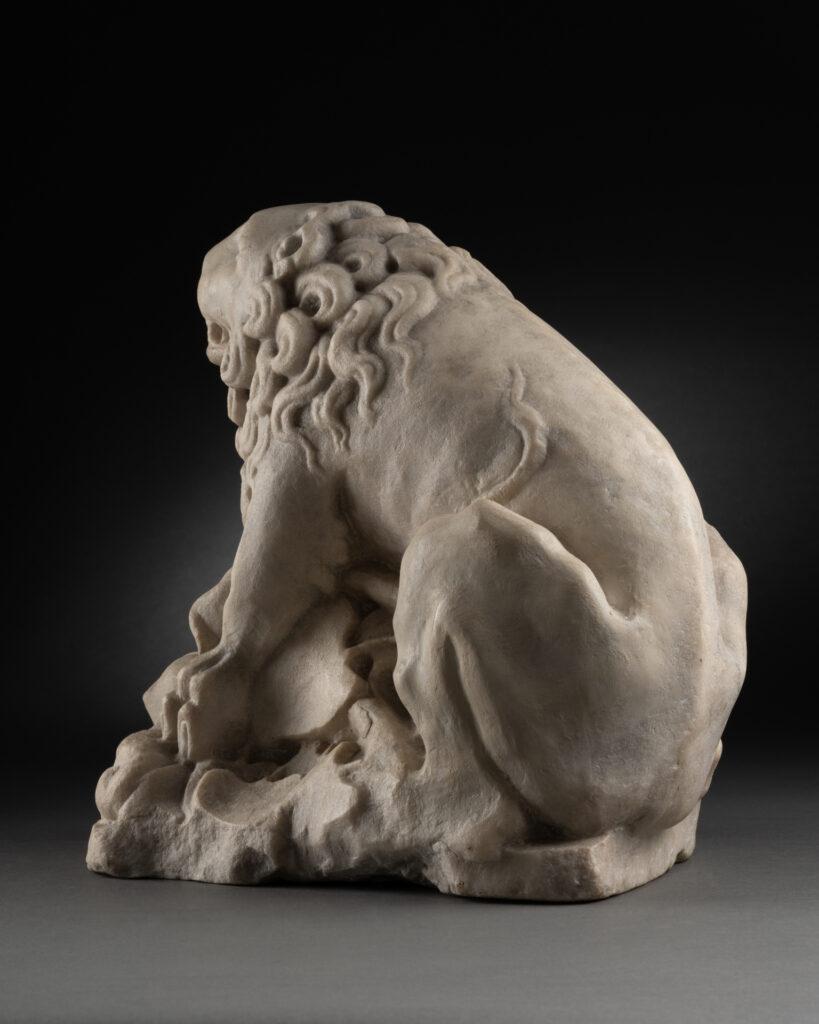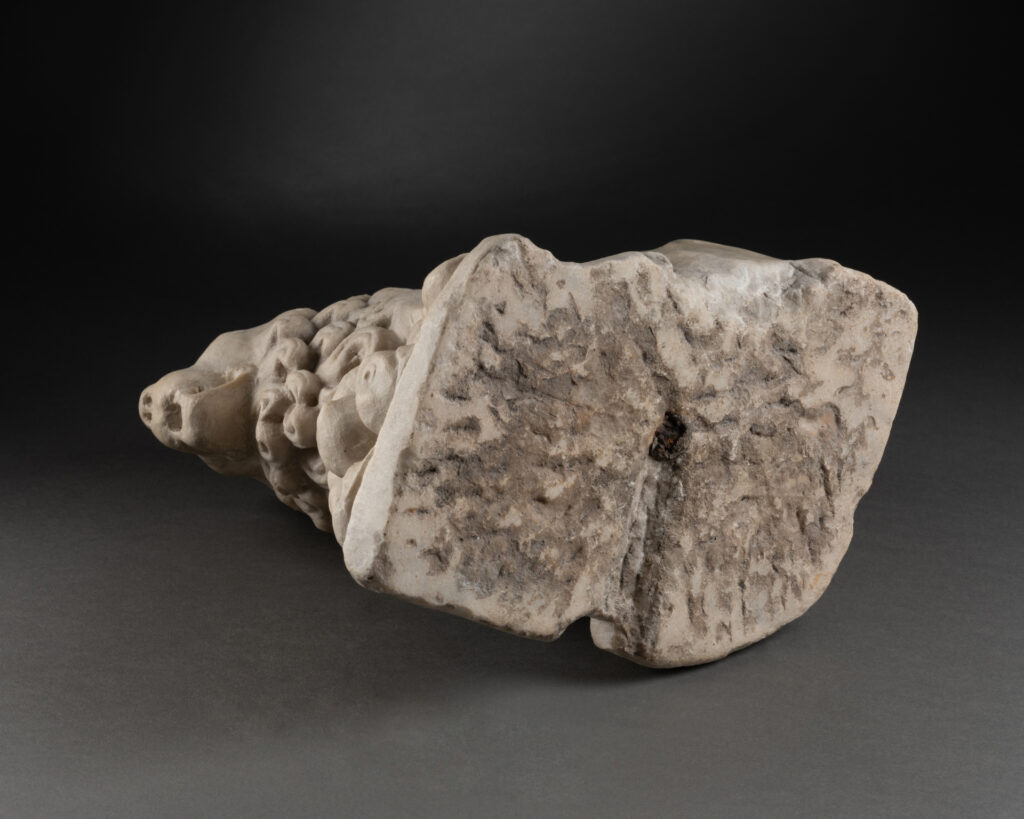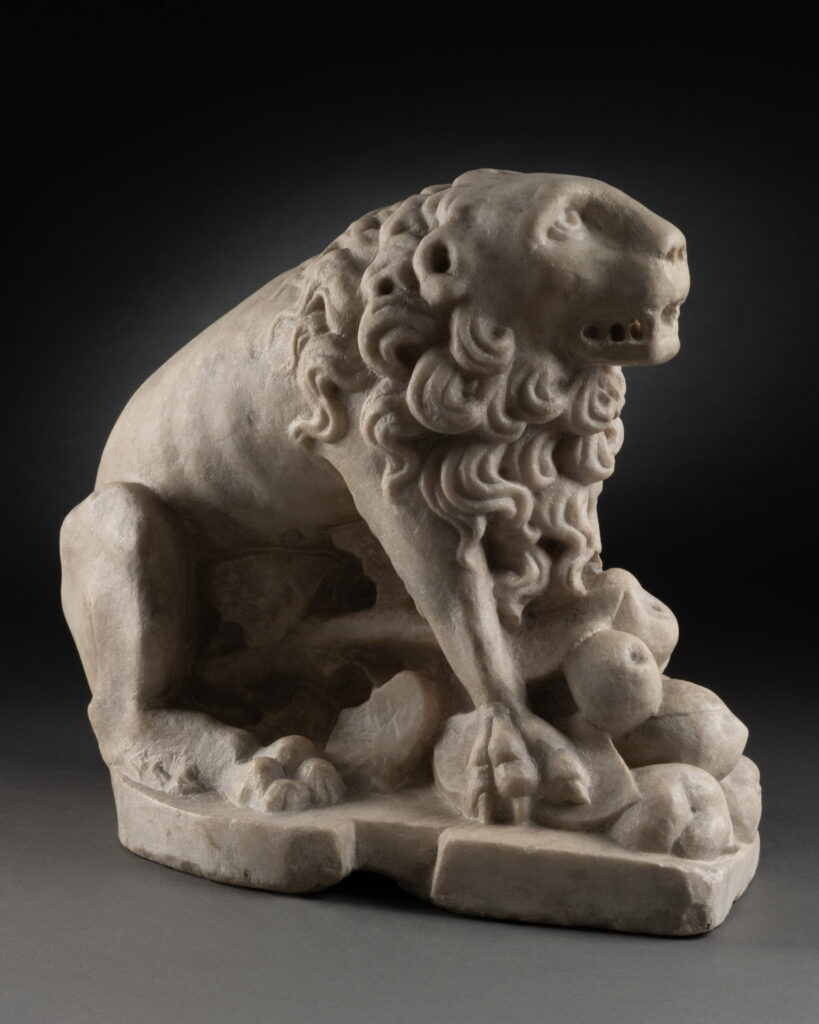This magnificent marble lion is part of a 14th-century recumbent bed. In the Middle Ages, recumbent figures were sculptures of people lying down, usually in tombs. Symbols of the continuity of life, they possess many attributes that reflect the personality of the deceased. According to tradition, each person has three recumbent statues: a body recumbent statue, an entrails recumbent statue and a heart recumbent statue. This is due to the difficulty of preserving the body after death, which forces the separation of these elements.
Animals are carved at the foot of the recumbent statues, a tradition that dates back to the 13th century and disappeared very quickly during the Renaissance. In many cases, the animals are charged with various meanings, demonstrating a real taste for iconographic complexity among medieval artists. As the representation of these animals is symbolic, their interpretation can be multiple. These animals are supposed to assist in the deceased’s journey to the afterlife, and sometimes their presence can be a sign of protection for the living from the return of the dead. It can also recall the circumstances of the deceased’s death, as well as refer to his or her virtues, characteristics or aptitudes. Some historians also see a link between these animals and tetramorphs, as medieval artists had a tradition of applying symbolism to the interpretation of the natural world confused with the spiritual.
The lion is the most frequently depicted animal and perfectly reflects this iconographic complexity. It is most often sculpted on men’s feet and can appear alone or as a duo. This animal generally carries a positive connotation and has the role of guardian, which is why it is often depicted at the entrance to sacred places. This protective image developed in medieval bestiaries, since it was already accepted that lions slept with their eyes open. In those days, he not only protected the House of God, but also people: his role was to accompany the deceased in death.
Since ancient times, lions have adorned tombs, as legend has it that at birth, a lion cub spent three days in limbo before being brought back to life by its parent, which is why the lion became a symbol of resurrection. The lion can also indicate that the deceased belonged to the nobility, reflecting values such as courage, strength and power. These characteristics give the lion a special place in heraldry. The animal is admired for its majestic nature, its power and its taste for combat, making it the king of animals. In rarer cases, the lion may be associated with the danger threatening the faithful in the person of the Devil.
It therefore carries an ambivalent symbolism that sometimes leads it to be seen as the embodiment of the Antichrist. However, in the tradition of recumbent figures, it remains a positive symbol that refers to the father or master, and seems to signify the importance of the person represented.
The base of our sculpture is decorated with ivy leaves and apple-like fruit. Ivy is symbolic of a couple’s fidelity.
It is often depicted next to the dog, which carries the same symbolism. An example can be found at the foot of a recumbent statue in the Basilica of Saint-Denis.
Ivy can also refer to immortality, and its heart-shaped leaves are usually accompanied by small fruits grouped in threes or fours, a tradition stemming from Merovingian sculpture.
The apple also refers to immortality. The fruit of the knowledge of good and evil in the Bible, the apple is also a symbol of power due to its spherical shape, reminiscent of the Earth: to hold it is to possess power. In Greek mythology, the apple is also a symbol of love and fertility, and is associated with Aphrodite and her son Eros.
Our sculpture was sealed with lead under the base and carved in marble. Originally, recumbent statues were made in stone, but production soon turned to marble, a more difficult but more noble material. On one side of the base, a slight indentation probably indicates where the lion was attached to the recumbent.
Some of the animals were carved from the same block of marble as the recumbent. Such is the case of the recumbent statue of Robert l’Enfant, created by Pépin de Huy in 1320 and preserved in the Basilica of Saint-Denis.
As production evolved, animals tended to be sculpted separately from the recumbent to which they belonged, sometimes even by two different artists. This is the case for our lion and the early 15th-century Gisant de Louis de Sancerre.
The representation of the lion here is highly stylized, notably in the work on the curls of its mane. This element and the position of the animal’s body, with its exposed ribs, are reminiscent of the work done on the lions in the recumbent statue of Clement VI in the Abbey of Saint-Robert at La Chaise-Dieu.
Our recumbent lion is also carved with large paws and an angular snout that reveals its teeth. These specific features are also to be found on the recumbent statue of Philip IV the Fair, created around 1327 and now housed in the Basilica of Saint-Denis.
Its physical characteristics, position and surrounding attributes suggest that our recumbent lion carries two symbolic meanings: protection and immortality. This beautifully crafted piece is one of the finest examples of 14th century recumbent statues.
